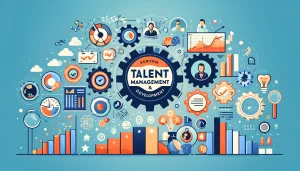A Visitor Management & Attendance Marking system is a software solution designed to streamline the process of managing visitors to a facility while also recording the attendance of employees or visitors. Here are the key features and functionalities typically found in such a system:
Visitor Management Features:
Visitor Registration: Allow visitors to register their details upon arrival, including name, contact information, purpose of visit, and person/department to visit.
Pre-registration: Enable hosts to pre-register visitors and issue them with pre-arrival notifications, including QR codes or barcodes for expedited check-in.
Check-in/Check-out: Provide self-service kiosks or reception desks for visitors to check-in and check-out upon arrival and departure.
Visitor Badges: Print visitor badges with relevant information, including visitor name, photo, company, and visit duration, for easy identification.
Alerts and Notifications: Notify hosts via email, SMS, or app notifications when their visitors arrive, facilitating timely reception.
Watchlist Screening: Check visitor details against watchlists or blacklists to identify potential security risks or prohibited individuals.
Visitor Tracking: Monitor the movement of visitors within the facility and generate reports on visitor traffic, duration of stay, and other metrics.
Attendance Marking Features:
Employee Check-in/Check-out: Allow employees to clock in and out using biometric scanners, RFID cards, mobile apps, or web portals.
Real-time Attendance Tracking: Capture attendance data in real-time and update attendance records immediately upon check-in/check-out.
Geolocation Tracking: Record the location of employees when they clock in/out to verify their presence at designated work sites or premises.
Shift Management: Manage employee shifts, schedules, and rosters, including flexible or rotating shifts, overtime, and leave.
Absence Management: Track employee absences, including sick leave, vacation days, and other types of leave, and maintain accurate attendance records.
Integration with HR Systems: Integrate attendance data with HR systems, payroll systems, or time and attendance software for payroll processing and reporting purposes.
Notifications and Reminders: Send automated notifications and reminders to employees regarding their upcoming shifts, late arrivals, or missed clock-ins.
Reporting and Analytics:
Attendance Reports: Generate reports on employee attendance, including daily attendance summaries, late arrivals, early departures, and absenteeism rates.
Visitor Logs: Generate logs and reports on visitor traffic, check-in/out times, purpose of visit, and other visitor-related data.
Analytics Dashboard: Provide an analytics dashboard with visualizations and insights into attendance trends, patterns, and anomalies for informed decision-making.
Security and Compliance:
Data Security: Implement security measures to protect visitor and employee data, including encryption, access controls, and compliance with data privacy regulations.
Compliance Management: Ensure compliance with security protocols, visitor policies, and regulatory requirements related to visitor management and employee attendance tracking.





